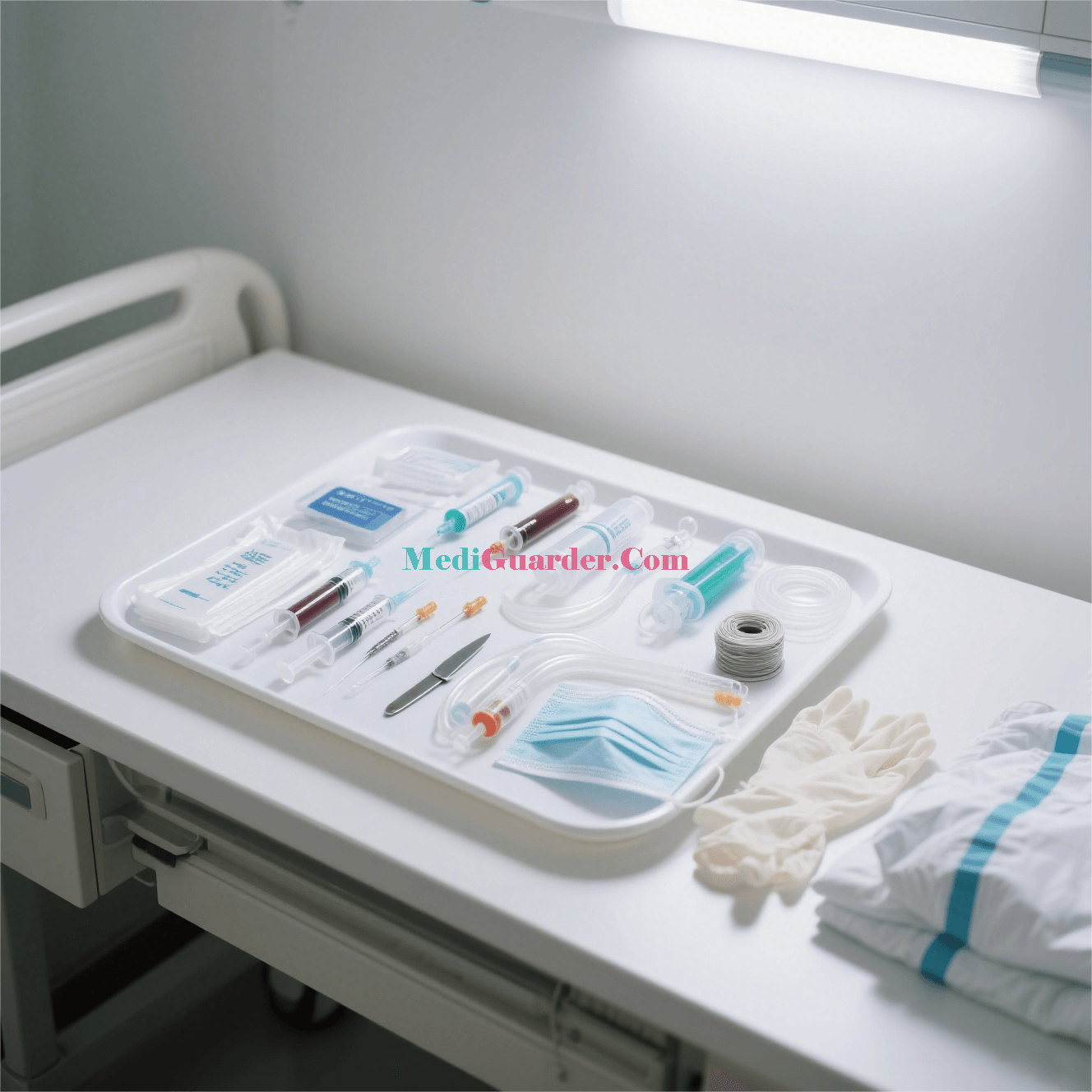Medical disposable consumables play a pivotal role in the modern medical system. They not only improve the efficiency of medical services but also significantly reduce the risk of cross-infection, ensuring the safety of patients and medical staff. This article comprehensively analyzes the important components of this medical field from the definition, classification, application, advantages, management challenges, and future development trends of medical disposable consumables.
Definition and Classification of Medical Disposable Consumables
Medical disposable consumables refer to medical supplies that are discarded after a single use in medical procedures, aiming to prevent cross-infection and ensure medical safety. These consumables are diverse in types and can be roughly classified by purpose as follows:
Injection and Infusion Category: Such as disposable syringes, infusion sets, blood collection needles, etc., which are among the most common consumables in clinical diagnosis and treatment.
Surgical and Operative Category: Including scalpels, suture needles and threads, surgical drapes, drainage tubes, etc., used for surgical operations and postoperative care.
Examination and Diagnosis Category: Such as disposable endoscope sheaths, catheters, urine bags, etc., assisting doctors in various examinations and treatments.
Nursing and Protection Category: Including masks, gloves, protective clothing, bed sheets, etc., ensuring the safety of daily care for medical staff and patients.
Other Special Categories: Such as dialyzers, artificial joints, etc., which are not routine consumables but indispensable in specific treatments.

Application Scenarios of Medical Disposable Consumables
The application of medical disposable consumables covers almost every link of medical activities. In emergency rooms, disposable syringes quickly provide necessary drug treatment for patients; in operating rooms, sterile surgical instruments and consumables ensure the smooth progress of operations; in wards, protective supplies effectively isolate pathogens, protecting the health of patients and medical staff. In addition, with the rise of telemedicine and home care, the demand for disposable consumables continues to grow, providing safe and convenient medical services for more people.
Advantages of Medical Disposable Consumables
Prevention of Cross-infection: Single use avoids the risk of cross-infection caused by repeated use, especially critical when dealing with infectious disease patients.
Improvement of Medical Efficiency: Eliminating the need for cleaning, disinfection, and reusing saves time and human resources, accelerating medical processes.
Ensurance of Patient Safety: Reducing damage or contamination of instruments due to repeated use, thereby lowering the risk of medical accidents.
Simplification of Management: Centralized procurement, distribution, and disposal of disposable consumables streamline the material management process in medical institutions.
Management Challenges of Medical Disposable Consumables
Despite the numerous benefits, the management of medical disposable consumables faces significant challenges:
Cost Control: With the continuous advancement of medical technology, the prices of high-end consumables continue to rise, imposing economic pressure on medical institutions.
Environmental Protection: The disposal of a large number of used disposable consumables has become a problem, and improper handling may cause environmental pollution.
Quality Supervision: The quality of consumables in the market varies, and ensuring the procurement of safe and effective products is a key issue for medical institutions.
Rational Use: Avoiding waste caused by excessive use while ensuring sufficient supplies during critical moments.
Future Development Trends of Medical Disposable Consumables
Facing these challenges, medical disposable consumables also show positive development trends:
Technological Innovation: With the progress of materials science and manufacturing technology, future disposable consumables will be more intelligent and user-friendly. For example, disposable syringes with sensors can monitor patient reactions in real time.
Environmentally Friendly Materials: Enhanced environmental awareness promotes the medical industry to seek more eco-friendly consumable materials, such as biodegradable materials, to reduce the environmental burden.
Digital Management: Achieving intelligent management of consumables through technologies like the Internet of Things and big data to improve usage efficiency and cost control.
Recycling and Reuse: Exploring ways to recycle disposable consumables, such as converting some consumables into materials for other purposes through special treatment technologies.
International Cooperation: Facing the global issue of uneven distribution of medical resources, international cooperation will become the solution to jointly promote the R&D, production, and distribution of medical consumables.
Conclusion
As an indispensable part of the modern medical system, the importance of medical disposable consumables is self-evident. Facing future challenges and opportunities, the medical industry needs continuous innovation, strengthened supervision, and optimized management to ensure that every patient can enjoy safe, efficient, and environmentally friendly medical services. Meanwhile, all sectors of society should work together to promote the sustainable development of the medical consumables industry and contribute to building a Healthy China.
With the advancement of technology and the innovation of medical concepts, we have reason to believe that future medical disposable consumables will be more intelligent, eco-friendly, and humanized, making greater contributions to human health. In this process, every participant in each link—from R&D personnel to producers, from medical institutions to patients, and even every member of society—plays an indispensable role.
 China Disposable Medical Supplies, Medical Consumables Supplier
China Disposable Medical Supplies, Medical Consumables Supplier

WhatsApp
Scan the QR Code to start a WhatsApp chat with us.